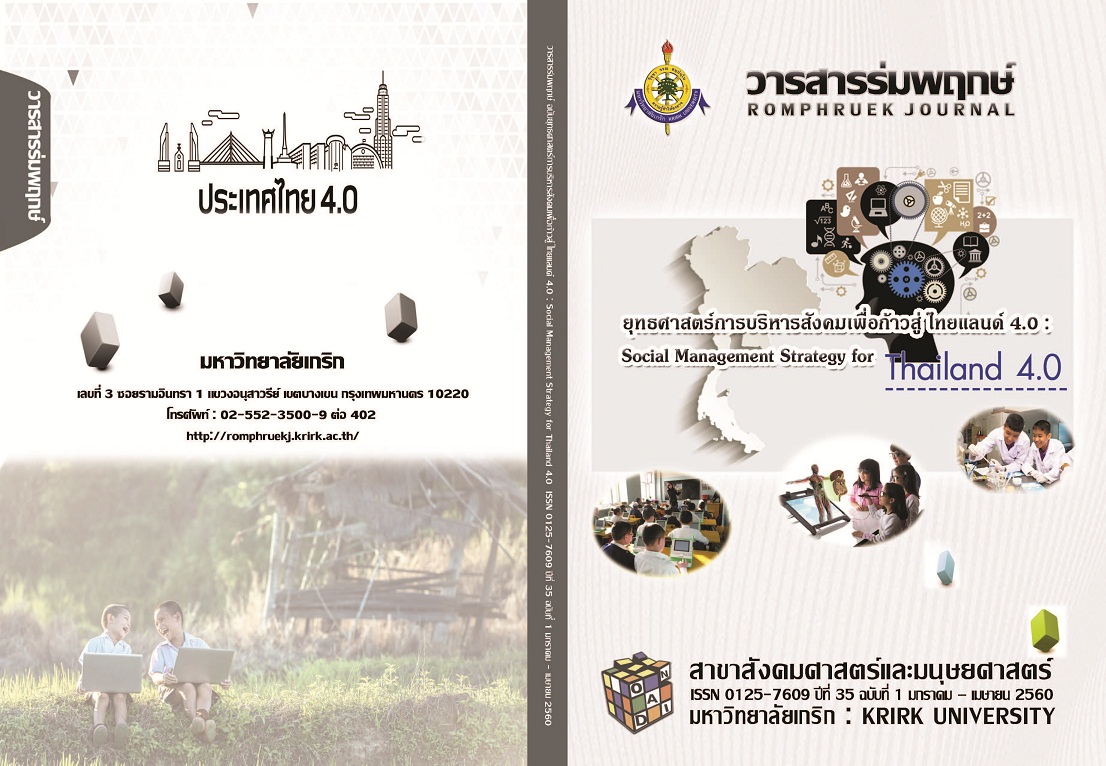The Buddhist Integration of the Sangha Organization Administration in Nakhon Sawan Province:Analyzed from the Process and Achievement
Main Article Content
Abstract
The purposes of the study are 1) to analyze the sangha organization administration in Nakhon Sawan Province, 2) to integrate the Buddhist principles to strengthen of the sangha organization administration in Nakhon Sawan Province, 3) to present the results of process analysis and achievement in the sangha organization administration in Nakhon Sawan Province. Methodology was the mixed methods. The data for this qualitative research were collected from key informants, who were administrators, experts and representatives from related agency with structured in-depth interviews of 17 experts. Data were also collected from participants in focus group discussion, who were administrators, religious scholars, professors and representatives from relevant agencies and concluded data for quantitative research by survey research of 364 monks with questionnaires.
For research results, the findings are in the form of "Integrative Buddhist Management" as a guideline for management as follows: 1) Promote the fulfillment of the spirit. 2) Have a clear and concise algorithm. 3) Follow the principles of Dhamma-Vinaya. 4) Cost effective management. 5) Management on time. 6) More common benefit than personal one and 7) Putting the right man on the right jobs. At the same time, in order to have the effective monastic order administration in the process and the result the program should be: 1) monitored fairly, 2) operated for the benefits for all rather than for personal interest, 3) developed according to the precepts of concentration meditation, 4) followed cost effective management 5) followed the sufficiency economy 6) respected and punctual 7) persistent on self-development.
Article Details
Every article published in the Romphruek Journal of the Humanities and Social Sciences is the opinion and point of view of the authors. Thery're not the viewpoint of Krirk University or the editored department. Any part or all of the articles for pablication must be clearly cited.
References
กรมการศาสนา. (2540). คู่มือพระสังฆาธิการว่าด้วยการคณะสงฆ์และการพระศาสนา. กรุงเทพฯ :โรงพิมพ์การศาสนา.
กองแผนงาน กรมการศาสนา. (2542). คู่มือพระสังฆาธิการและพระวินยาธิการ. กรุงเทพฯ : กระทรวงศึกษาธิการ.
ชัยยุทธ์ ชิโนกุล. (2556). กลยุทธ์การฝึกอบรมและพัฒนาพระภิกษุสามเณรในจังหวัดชายแดนใต้. บัณฑิตวิทยาลัย มหาวิทยาลัยมหาจุฬาลงกรณราชวิทยาลัย, กรุงเทพฯ.
โชติ บดีรัฐ. (2554). การบริหารงานของพระสังฆาธิการ ในเขตการปกครองคณะสงฆ์ภาค 4 เพื่อความ มั่นคงแห่งพระพุทธศาสนา. บัณฑิตวิทยาลัย มหาวิทยาลัยราชภัฏวไลยอลงกรณ์, ปทุมธานี.
ณรัฐ วัฒนพานิช. (2551). การปรับพฤติกรรมมนุษย์ตามหลักสัปปุริสธรรม 7. บัณฑิตวิทยาลัย มหาวิทยาลัยรามคำแหง, กรุงเทพฯ.
บัญชายุทธ นาคมุจลินท์. (2556). วิเคราะห์การบริหารองค์กรในการเผยแผ่พระพุทธศาสนาของศูนย์การเผยแผ่พระพุทธศาสนาประจำจังหวัดอุทัยธานี. บัณฑิตวิทยาลัย มหาวิทยาลัยมหาจุฬาลงกรณราชวิทยาลัย, กรุงเทพฯ.
พระธรรมปิฎก (ป.อ. ปยุตฺโต). (2541). นิติศาสตร์แนวพุทธ. กรุงเทพฯ : มูลนิธิพุทธธรรม.
พระธรรมปิฎก (ป.อ. ปยุตฺโต). (2537). เมืองไทยจะวิกฤติถ้าคนไทยมีศรัทธาวิปริต. กรุงเทพฯ : มูลนิธิพุทธธรรม.
พระมหาธฤติ วิโรจโน. (2556). รูปแบบการพัฒนาพระสังฆาธิการเพื่อประสิทธิภาพการบริหารกิจการคณะสงฆ์. บัณฑิตวิทยาลัย มหาวิทยาลัยมหาจุฬาลงกรณราชวิทยาลัย, กรุงเทพฯ.
พระมหาประสงค์ กิตฺติญาโณ (พรมศรี). (2556). การศึกษาเปรียบเทียบการบริหารงานบุคคลในองค์กรสมัยใหม่กับแนวคิดทางพระพุทธศาสนา. บัณฑิตวิทยาลัย มหาวิทยาลัยมหาจุฬาลงกรณราชวิทยาลัย, กรุงเทพฯ.
มหาวิทยาลัยมหาจุฬาลงกรณราชวิทยาลัย. (2539). สุตตันตปิฎก สังยุตตนิกาย สคาถวรรค. กรุงเทพฯ : โรงพิมพ์มหาจุฬาลงกรณราชวิทยาลัย.
สายัณห์ อินนันใจ และคณะ. (2553). การปกครองคณะสงฆ์ไทย. พิมพ์ครั้งที่ 3. กรุงเทพฯ : มหาจุฬาลงกรณราชวิทยาลัย.
สำนักงานคณะกรรมการพัฒนาการเศรษฐกิจและสังคมแห่งชาติ. (2556). แผนพัฒนาเศรษฐกิจและสังคมแห่งชาติฉบับที่ 11 (พ.ศ.2556-2559). กรุงเทพฯ : สำนักนายกรัฐมนตรี ทำเนียบรัฐบาล.
Krejcie-Morgan. Sample-Size-Table. (3 มีนาคม 2559) สืบค้นจาก http://www.kenpro.org/sample-size-determination-using-krejcie-and-morgan-table/en/.


